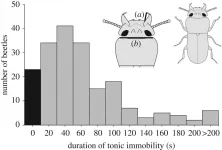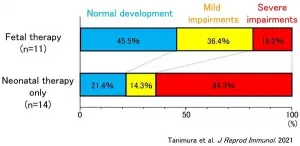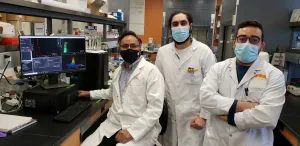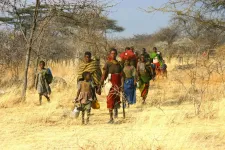(Press-News.org) When it comes to drones, the Singapore public is not as keen for them to be used to provide services around their living spaces, finds a study by researchers at the Nanyang Technological University, Singapore (NTU Singapore). However, they are more accepting of drones being used in areas like recreational spots or industrial areas.
There is growing global interest in the use of drones to provide a range of applications - from building inspection to last mile commercial delivery - that promise productivity gains and cost reductions.
In Singapore, the use of drones is picking up, with the government adopting them for various projects in the Smart Nation drive, where technology is used for direct and positive impact on people's lives.
Against this backdrop, an interdisciplinary research team led by Associate Professor Lim Beng Chong from the Nanyang Business School and Professor Low Kin Huat from the School of Mechanical & Aerospace Engineering carried out a study to better understand public attitudes towards the technology.
The study showed that while the Singapore public is ready for extensive drone application in the country, acceptance levels differed significantly depending on the context of use. The public is least welcoming towards drones when flown above residential estates but tend to be more embracing when they are used in industrial zones.
The NTU study was conducted from April to June 2019, using a globally recognised survey model. It involved 1,050 Singaporeans and permanent residents aged 21 to 80.
"We can expect drones to become commonplace in our daily lives in future," said Assoc Prof Lim. "It is thus important for policymakers, businesses, and regulators to understand how the public feels about the technology, as its acceptance levels will have a direct impact on the scope and pace of adoption. Our work can guide efforts to introduce drone use, by providing insights into public perceptions that are specific to a highly urbanised environment like Singapore, including suggestions on how to improve acceptance levels."
Published online in the scientific journal Technology in Society in December 2020, this is believed to be the first study on the perceptions of drone use in a highly urbanised environment in Asia.
Fears and concerns surrounding drone use
Previous studies have focused on drone use in western countries and did not consider the context of drone applications in different contexts. The NTU study looked at public acceptance of drone use in four different types of urban space - residential, recreational, industrial, and commercial areas. It also included the function of the drone (i.e., what it is used for) and its operators.
The NTU research team found that the Singapore public is more accepting of drone use by government, commercial and industrial users than by private individuals. Drones for the purpose of search and rescue by authorities was most welcomed (92%), but the public approved less of commercial and industrial players using drones to transport people (62%). Overall, the study found support for private use is lower than for most other purposes.
The study identified two critical factors influencing public acceptance of drone use. First, the fears and concerns of the public. Among the top four worries indicated by participants were, in descending order: the misuse of drones by unauthorised personnel; inability to identify whether drones are ?lming or not; drones being a threat to one's physical safety if parts of it fall; and the loss of privacy.
Second, the perception of the benefits of the technology. The public believe the technology is more beneficial when used for consumers, the economy and improving workplace safety, but less so for improving neighbourhood security.
The findings highlight that the public differentiates where and how drones are being used. Therefore, the NTU research team said, communication and educational strategies should be adapted and customised to the contexts of drone applications, to effectively improve public acceptance.
For example, when educating the public about drone use in residential areas, the information might be focused on the safety of drone use, instead of its purported benefits.
"Drone technology represents a promising industry with many more uses being developed every day," said Prof Low, co-author, and drone expert from the School of Mechanical & Aerospace Engineering.
"By understanding the relationship between the factors influencing public acceptance and the context of drone use, developers and the authorities can focus their attention on specific things that are problematic to the public. If it is a fear of falling parts when drones are flown in residential areas for example, developers can work on ways to demonstrate that their parts will not become detached. Or the authorities can map out and regulate safe flying routes such as over housing estate rooftops, thus contributing to a better public reception for drones," he said.
INFORMATION:
Cambridge, Massachusetts - They may be the youngest astronomers to make a discovery yet.
This week, 16-year-old Kartik Pinglé and 18-year-old Jasmine Wright have co-authored a peer-reviewed END ...
Across many animal species there is great evolutionary pressure on males, who often engage in combat for the rights to copulation. This phenomenon, called sexual selection, often ends up favoring males with larger weapons, such as horns or pincers. Interestingly, scientists have noted that males endowed with smaller weapons adopt alternative reproductive tactics in some species. For example, instead of fighting other more powerful males, they may try to sneak around or disperse in search of a lonely female.
Variability in sexual behavior according to a male's weapon size has been widely studied. However, it's worth noting that bigger is not always better. Though larger weapons usually help in fights for reproductive rights, they can also be ...
Blood is vital to life, and a healthy body replenishes worn-out blood cells with new ones throughout one's lifetime. If something goes wrong with this process, serious illness will result.
Researchers from the National University of Singapore (NUS) have now discovered a mechanism controlling the replenishment of blood cells, which could have relevance for new treatments for blood cancers and other blood-related diseases.
The international research team, helmed by Dr Akihiko Numata while he was a Postdoctoral Fellow in the laboratory of Professor Daniel Tenen of the Cancer Science Institute of Singapore and Yong Loo Lin School of Medicine ...
Countries around the world are seeing a surge in the number of computer science students. Enrolment in related university programs in the U.S. and Canada tripled between 2006-2016 and Europe too has seen rising numbers. At the same time, the age to start coding is becoming younger and younger because governments in many different countries are pushing K-12 computer science education. Despite the increasing popularity of computer programming, little is known about how our brains adapt to this relatively new activity. A new study by researchers in Japan has examined the brain activity ...
A cross-institutional research group has revealed for the first time in the world that infants with symptomatic congenital cytomegalovirus (CMV) infection who were treated with a combination of immunoglobulin fetal therapy and neonatal therapy with antiviral drugs were less likely to experience the severe aftereffects associated with the infection than those who only received the neonatal therapy.
It is hoped that the number of children suffering severe aftereffects resulting from congenital CMV infection will decrease in the future.
The research group included the following members:
Doctor YAMADA Hideto ...
Tokyo, Japan -- In the marchland of Japan's Oze National Park, keeping track of the deer population has been a difficult and time-consuming task for the park rangers. Now their lives could get much easier, thanks to a novel technique for tracking deer movements using unmanned listening devices developed by researchers at the Institute of Industrial Science, a part of The University of Tokyo.
Monitoring deer numbers is important in Oze and other national parks in Japan because deer are not native to the ecosystem and can have damaging effects on it. Current methods of monitoring deer populations range from traditional techniques such as counting droppings to photographing deer at night using automated cameras or from above during the day using unmanned aerial vehicles ...
Air pollution is a key risk factor for cardiovascular disease, and a major contributor to the global burden of disease. Long-term exposure to air pollution has also been linked to an increased risk of death from COVID-19. This dangerous "triple threat" of air pollution, COVID-19 and cardiovascular disease should be taken seriously, warn major health authorities.
Four leading cardiovascular organizations - the World Heart Federation (WHF), American College of Cardiology (ACC), American Heart Association (AHA) and European Society of Cardiology (ESC) - today released a joint statement urging the medical community and health authorities to mitigate the impact of air pollution on people's ...
A Quebec research team has discovered two early plasma markers to detect Alzheimer's disease five years before its onset. The results of this recent study led by the doctoral student Mohamed Raâfet Ben Khedher and postdoctoral student Mohamed Haddad, directed by Professor Charles Ramassamy of the Institut national de la recherche scientifique (INRS), have been published in the prestigious scientific journal Alzheimer's & Dementia: Translational Research & Clinical Interventions (TRCI).
The diagnosis of Alzheimer's disease is usually based on a series of psychometric ...
Support for policies prohibiting smoking and the use of tobacco products on Oregon State University's Corvallis campus grew substantially over a five-year span, especially among tobacco users, a recent OSU study found.
The study, published earlier this month in the journal Preventive Medicine, is unique in its analysis of support for smoke- and tobacco-free campus policies over a long period of time. Most other studies of attitudes toward smoking policies only assess a single point in time.
"Tobacco-free policies are one of the most effective things we can do to reduce the burden of tobacco use, and they are highly supported ...
Navigating, exploring and thinking about space are part of daily life, whether it's carving a path through a crowd, hiking a backcountry trail or maneuvering into a parking spot.
For most of human history, the driving force for day-to-day wayfinding and movement across the landscape was a need for food. And unlike other primates, our species has consistently divided this labor along gender lines.
In new research published in Nature Human Behaviour, scientists including James Holland Jones of Stanford and lead author Brian Wood of University of California, Los Angeles, argue that the increasingly gendered division of labor in human societies during the past 2.5 million years dramatically shaped how our species uses space, and possibly ...




